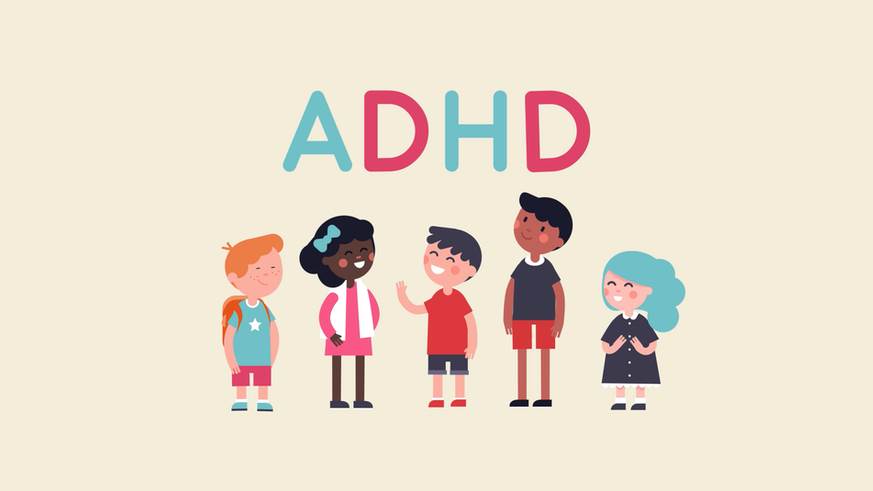ADHD (ADHD Attention Deficit Disorder) is a mental disorder that affects many people, but it isn’t well understood. In this guide, we will explore the basics of ADHD (ADHD Attention Deficit Disorder), what you need to know about diagnosis and treatment options, how to talk to your child or loved one about their condition, and much more.
Contents
- 1 Understanding ADHD (ADHD Attention-deficit Disorder)
- 2 Signs And Symptoms Of ADHD
- 3 Common Myths And Facts About ADHD
- 4 Common Challenges Faced By
- 5 Self-help
- 6 Treatment Options For ADHD
- 7 Experts’ View On ADHD
- 8 Stigma And Discrimination Associated With ADHD
- 9 Talking To a Professional
- 10 Conclusion
- 11 A Word From Therapy Mantra
Understanding ADHD (ADHD Attention-deficit Disorder)
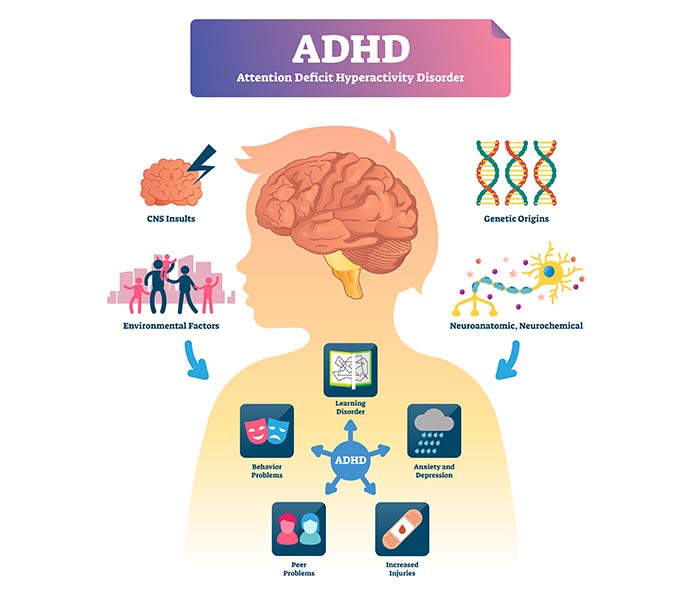
ADHD is a condition that affects people’s ability to focus and control their impulses. It can make it difficult for someone to stay on task or finish projects. ADHD is one of the most common mental disorders in children and adults, according to the National Institute of Mental Health (NIMH). Around 11 percent of school-aged children in the United States have ADHD. It is even more prevalent among adults, with around four percent of all American adults living with it.
ADHD can present itself differently in different people and often comes alongside other mental health conditions like anxiety or depression (in fact, 30-50% of individuals who receive an ADHD diagnosis will also be diagnosed with another mental health condition).
Types Of ADHD
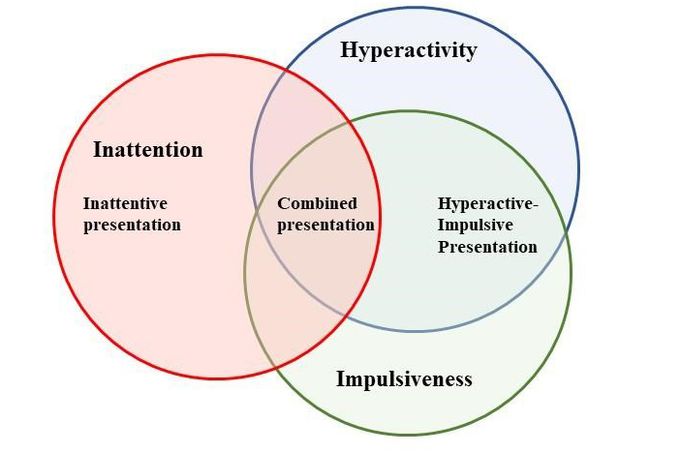
There are three types of ADHD: primarily inattentive, primarily hyperactive-impulsive, and a combination of both.
Primary Inattentive Type
If you have this type, you may find it hard to pay attention to details or instructions. You might also get distracted very easily by other people or things around you that take your attention away from your work. Additionally, you might have a hard time finishing tasks or often lose things that are necessary for certain projects.
NOTE: Someone who is predominantly disorganized and has problems with focus, but may not be as hyperactive or impulsive as those with ADD/ADHD.
Primary Hyperactive-Impulsive Type
If you have this type of ADHD, it may be difficult to sit still in class and/or at home (in school and social situations). You also tend to act impulsively a lot and might have trouble waiting your turn in games or for your turn to speak. Additionally, you might be more aggressive than other children your age.
NOTE: Someone who is very active and has problems with impulse control, but may not be as disorganized as those with ADD/ADHD.
Combination Type
If you have this type of ADHD, you will experience symptoms from both the inattentive and hyperactive-impulsive types. It’s commonly seen among girls with ADHD and makes up around 15% of all cases, according to NIMH statistics.
NOTE: It is often referred to as a “mixed presentation” because it combines elements from both the inattentive and hyperactive-impulsive types.
Degrees Of ADHD
There are three degrees of ADHD: mild, moderate, and severe.
Mild
This is the least severe type of ADHD. People with mild ADHD may have some trouble staying focused and controlling their impulses, but they can still lead relatively normal lives with a bit of help.
Moderate
This is the middle degree of ADHD. People with moderate ADHD have more difficulty staying on task than those with mild ADHD, and they also experience more impulsiveness.
Severe
This is the most severe type of ADHD. People with severe ADHD have extreme difficulty staying focused, controlling their impulses, and completing tasks. They may also act out aggressively and be a challenge to care for at home or in school.
Diagnosis Of ADHD
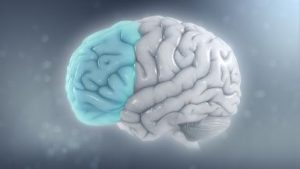
No one test can diagnose ADHD. If you or your child is experiencing some of the signs and symptoms of ADHD, it’s important to consult a mental health professional for an evaluation. A diagnosis will be based on how much these symptoms are impacting your life and how much distress they are causing you.
It is diagnosed based on a thorough interview with your child or loved one and their parents/guardians, as well as observing the person’s behavior. A medical professional will also want to know about any other mental health conditions that you might have along with ADHD, such as anxiety or depression.
Signs And Symptoms Of ADHD
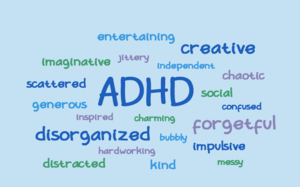
In Children
In children, the signs and symptoms of ADHD can be different at different ages.
Here are some common signs and symptoms of ADHD in school-aged children:
- Trouble paying attention or staying on task
- Easily distracted
- Can’t seem to stay seated
- Frequently fidgets or squirms
- Talks too much or has trouble staying quiet
- Tends to be impatient
- Often interrupts others
In Adults (Men And Women)
The signs and symptoms of ADHD in adults can look different than in children. Here are some common signs and symptoms:
In Men
In men, the signs and symptoms of ADHD tend to be more hyperactive than in women. Here are some common signs and symptoms:
- Trouble organizing or completing tasks
- Hyperactivity (this can look different in adults than it does for children)
- Can’t seem to stay still
- Easily bored
- Impulsive behavior
In Women
The signs and symptoms of ADHD in women tend to be more about inattention than hyperactivity. Here are some common signs and symptoms:
- Can’t seem to stay focused or concentrate well on a task for a long period
- Easily distracted by things going on around you, such as noises from other people or things around you that take your attention away from your work.
- Additionally, you might have a hard time finishing tasks or often lose things that are necessary for certain projects.
Common Myths And Facts About ADHD
Myth: People with ADHD are lazy and just don’t want to try
Fact: This is not true! People with ADHD often have to work much harder than others just to try and stay focused on a task.
Myth: People with ADHD can’t succeed in life
Fact: This is also not true! Many successful people have been diagnosed with ADHD, including Steve Jobs of Apple Computers fame. However, some find it very hard to keep their symptoms under control.
Common Challenges Faced By
Children With ADHD
- Inattention can lead to children not doing their homework or forgetting to turn in assignments altogether. They may also have trouble following instructions and paying attention during class. This can result in them falling behind in schoolwork and struggling to catch up.
- Hyperactivity may lead to kids being disruptive in class, getting into fights with other kids, and having trouble paying attention.
- Impulsiveness can lead to children making bad decisions or taking risks without thinking about the consequences. This can include things like trying drugs or alcohol, shoplifting, or engaging in unprotected sex.
Adults With ADHD
- Inattention often leads to adults with ADHD being disorganized and struggling to keep track of time or important tasks. They may also have trouble staying on task in a meeting or completing projects at work.
- Hyperactivity can lead to adults feeling restless, always needing to be doing something, and having problems relaxing.
- Impulsiveness often leads to adult ADHD sufferers making bad decisions or taking risks without thinking about the consequences.
Men With ADHD
Many men with ADHD find it difficult to stay organized and often feel overwhelmed by tasks. They may have a hard time keeping track of time, which can lead to them being late for appointments or deadlines. Additionally, many men with ADHD struggle with money management and tend to spend more than they should.
Women With ADHD
Like men, women with ADHD often have trouble staying organized. They may feel overwhelmed by tasks and have a hard time completing them in the right order. Additionally, women with ADHD are often very sensitive to loud noises or crowded areas, which can cause their symptoms to become worse. They may also struggle with emotions that they might not be able to control at times.
Self-help
For Children With ADHD
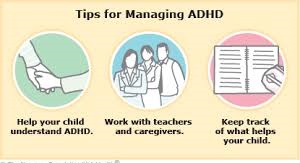 If you’re a child with ADHD, there are some things that you can do to help manage your symptoms:
If you’re a child with ADHD, there are some things that you can do to help manage your symptoms:
- Get organized! This may include using planners, calendars, or other tools to keep track of what you need to do. Break tasks down into smaller steps so they seem less overwhelming and make a checklist for yourself.
- Set realistic goals for yourself and try to avoid perfectionism, which is often a challenge for people with ADHD.
- Find an activity or hobby that you enjoy and stick with it! This can help you focus and stay on task.
- Talk to your parents or teachers about the challenges that you’re facing in school and ask for their help.
NOTE: Psychologists and other mental health professionals can also work with kids to help them manage their symptoms.
For Adults With ADHD
If you’re an adult with ADHD, there are some things that you can do to stay on top of your symptoms:
- Remember what works for you! Keep track of what activities or tasks help you stay focused and organized.
- Create a routine and stick to it as much as possible. This can help reduce feelings of chaos and disorganization.
- Use tools like planners, calendars, or apps to keep track of your time and appointments.
- Set realistic goals for yourself and avoid perfectionism.
- Get help! Talk to your doctor about the challenges that you’re facing and ask for their guidance.
NOTE: Psychologists can also work with adults to manage symptoms of ADHD.
For Men With ADHD
To help manage their symptoms, men with ADHD should try to create a structured routine and stick to it as closely as possible. It’s also helpful to keep a journal where you track your thoughts and feelings, as well as your accomplishments throughout the day.
For Women With ADHD
To help manage these issues, it’s important for women with ADHD to develop a good support system. This could include family, friends, or a therapist. Additionally, it’s important to find an activity that you enjoy and can stick to, such as yoga or biking.
Treatment Options For ADHD
There are many different ways to treat ADHD, and the right treatment plan will vary from person to person. Some of the most common treatments include medication, therapy/counseling, and lifestyle changes.
Medications
There are many different types of medications that can be used to treat ADHD, including stimulants like Adderall and non-stimulant drugs such as Strattera or Intuniv.
NOTE: Psychostimulants (medications) such as Adderall are effective in treating symptoms of ADHD. These medications increase dopamine levels which helps improve focus and concentration while decreasing hyperactivity and impulsiveness. There may also be side effects associated with taking these medications, such as decreased appetite and difficulty sleeping.
Therapy/counseling
Therapy is another option that can be used in conjunction with medication. It is a more personal option that can help identify triggers for certain behaviors and learn more effective coping mechanisms. Also, it can also help address the emotional issues that often accompany ADHD, which include anxiety, depression, and mood swings. There are several different therapies that are effective in treating ADHD, including cognitive-behavioral therapy (CBT), family therapy, and social skills training.
Lifestyle changes
Experts also recommend making some simple lifestyle changes, such as getting enough sleep (seven to nine hours per night), eating a healthy diet, and exercising regularly. Additionally, it’s important to avoid caffeine and alcohol while managing symptoms of ADHD so that the disorder doesn’t get worse.
Experts’ View On ADHD
Unfortunately, many people still have a negative view of the disorder that is based on myths rather than facts. Many believe that it is due to lack of discipline or laziness and some even go so far as to label children with ADHD as “problem children.” However, ADHD is a real disorder that affects millions of people. It is caused by chemical and structural changes in the brain and cannot be cured, but it can be managed with proper treatment.
Case Study: Michael Phelps
Michael Phelps, who has ADHD and dyslexia, was bullied throughout school. In fact, in middle school, he wasn’t even allowed to attend swim meets because the teachers thought that it would be too stressful for him. However, by age 13 his hard work and dedication paid off when he won first place at a junior Olympics competition.
Phelps continued to work hard and became one of the best swimmers in history. He holds numerous records, including winning eight gold medals at the 2008 Beijing Olympics, fourteen gold medals at the 2012 London Olympics, and most recently twenty-three Olympic Gold Medals (so far).
Case Study: Bill Gates
Bill Gates is another example of a successful person with ADHD. Gates was diagnosed with the disorder in his early twenties and has said that it took him a long time to learn how to manage it.
He has attributed much of his success to his ability to focus intensely on a single task for long periods, which is a common trait among people with ADHD.
Gates is one of the most influential and richest people in the world.
Case Study: Richard Branson
Richard Branson, the founder of Virgin Group Ltd., was diagnosed with ADHD as a child. His mother used to call him “the bouncing boy” because he couldn’t sit still for more than five minutes at a time. As a child, Branson would often try to get his teachers’ attention by climbing up the walls.
Stigma And Discrimination Associated With ADHD
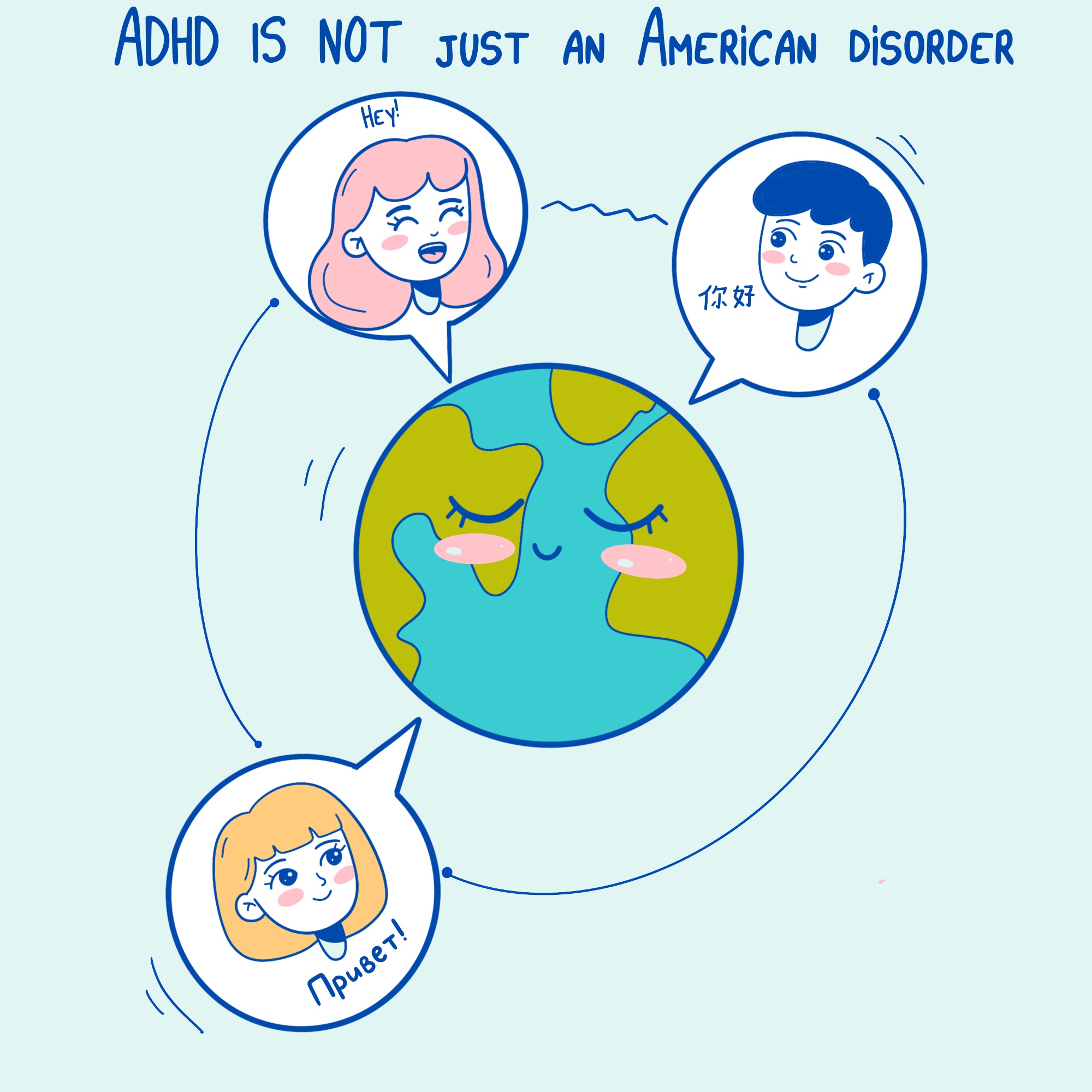
One of the biggest challenges faced by people with ADHD is the stigma and discrimination that often comes with it. Unfortunately, many people still have a negative view of the disorder that is based on myths rather than facts. Many believe that it is due to lack of discipline or laziness and some even go so far as to label children with ADHD as “problem children.” However, ADHD is a real disorder that affects millions of people. It is caused by chemical and structural changes in the brain and cannot be cured, but it can be managed with proper treatment.
Movies And Books On ADHD
Some many movies and books have been made about ADHD, which can help to educate people on the disorder. Some examples include “The Rain Man,” “Temple Grandin,” and “Far From The Madding Crowd.”
Celebrities With ADHD
Finally, it’s important to remember that ADHD is not just a disorder that affects children. Many celebrities have spoken out about their struggles with ADHD, including LeBron James, Will Smith, and Justin Timberlake.
Talking To a Professional
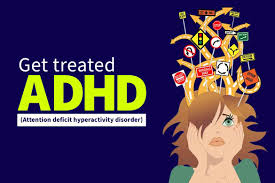
If you or someone you know is struggling with ADHD, it’s important to talk to a professional who can help. There are many resources available to help people manage this disorder, and there is no one-size-fits-all solution. Every person with ADHD will experience symptoms in different ways, so it’s important to find the treatment that works best for you.
Conclusion
Overall, it’s important to remember that ADHD is a treatable disorder. There are many ways to manage symptoms and there is no “one-size-fits-all” solution. It’s also important for people with ADHD not to lose hope because this disorder does not define who they are as a person and there are always resources available if you need help.
People with ADHD need to develop a good support system so that they can learn how to manage their symptoms. This could include family and friends or even a therapist/counselor who can help you deal with your emotions.
It’s also important to educate yourself about the disorder and find treatments that work for you. Many successful people have battled ADHD throughout their lives, so don’t feel discouraged. With hard work and dedication, you can overcome any obstacle.
A Word From Therapy Mantra
Your mental health — Your psychological, emotional, and social well-being — has an impact on every aspect of your life. Positive mental health essentially allows you to effectively deal with life’s everyday challenges.
At TherapyMantra, we have a team of therapists who provide affordable online therapy to assist you with issues such as depression, anxiety, stress, workplace Issues, addiction, relationship, OCD, LGBTQ, and PTSD. You can book a free therapy or download our free Android or iOS app.
